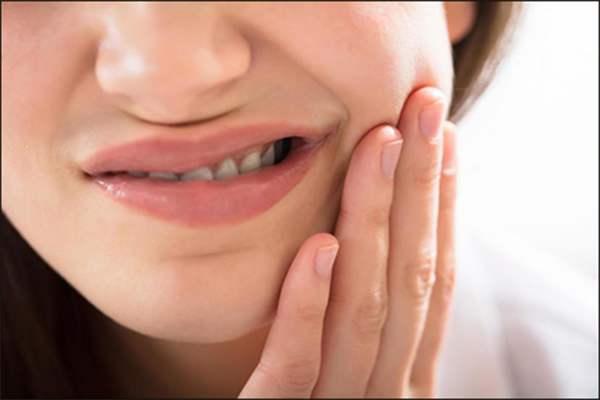November 2, 2022
Oromandibular Dystonia with Its Ayurvedic Correlation
Abstact
Oromandibular is a rare neuromuscular disorder of oromandibular region characterised by involuntary repetitive muscular contraction of oromandibular region. Its various physical manifestations can be dangerous for patient health and it can make patients socially disabled. Sometimes this can be misdiagnosed and patients get wrong treatment There is no specific diagnostic criteria and treatment for this in modern medicine. In ayurveda there is proper treatment mentioned for diseases related to neuromuscular conditions. This can be correlated with the vata vyadhi as per Ayurveda and treatment of vata vyadhi is explained properly in ayurvedic medicinal textbooks. Ayurvedic medicine is helpful in detoxifying the body and it has the potency to treat this disease properly.
INTRODUCTION
Dystonia is the involuntary muscle contractions of different parts of the body. Based on the anatomical site of the dystonia, it can be categorised as focal, segmental, multifocal and generalised. It can also be categorised on the basis of causes. Primary dystonia is idiopathic and secondary dystonia mostly occurs due to trauma and medications. It is important to not ignore dystonia and treat well
Oromandibular dystonia is a focal dystonia in which masticatory spasm & lingual muscles result in involuntary movement and pain in the jaw when opened, closed or deflected. It is sometimes referred to as cranial dystonia. Cranial dystonia is a condition in which the dystonia affects the region of the face and mouth. The symptoms come in later life after mid age (50 years and above) and appear to be more common in women.

PATHOPHYSIOLOGY
The specific reason for oro mandibular is unknown. After much discussion on the organic cause for this syndrome it is sometimes placed under adult onset torsion dystonia. However there is no significant sign for the pathogenesis of this disease. Because of this some scientist suggest that it is “psychogenic”
DIFFERENTIAL DIAGNOSIS
To diagnose oromandibular dystonia is difficult because its symptoms mimic other dental problems. Misdiagnosis can lead to harm to the patient and the progression of symptoms.
1. Dental mimics
Omd is present with dysfunction of both oral and facial musculature. It can be mimicked with the Temporo mandibular joint because in both the cases pain is present and bone dislocation occurs.
2. Medical Mimics
Neurological movement disorders can also be mimicked from omd if jaw tremor is present. There are many conditions like this for example parkinson’s disease when tremor affects the jaw, chin and mouth. In progressive stages can also include depression & stress and because of this it can be misdiagnosed as a psychiatric disorder. Drugs like dopamine can induce omd and tardive dyskinesia so it is difficult to differentiate
SIGN AND SYMPTOMS
- Involuntary opening of mouth
- Jaw shifting towards one side or the back
- Involuntary movements in the face or lip
- Involuntary movements of tongue
- Slurred speech
- Difficulty in chewing
- Muscle contraction of jaw and face
- Pain in jaw and oral cavity
AYURVEDIC VIEW
It is considered to be vata vyadhi in Ayurveda which means this is occurred due to the vitiation of dosha (vata) in the specific region oromandibular. Vata vyadhi has some specific characteristic symptoms like: asthi bhanga (dislocation of bones), shotha (swelling), stambha (stiffness), gaatra suptataa (numbness of body), bheda(spitting pain).
For treating vata vyadhi several ayurvedic therapies and drugs work magnificently. Among them some therapies are as follows: Sneha, Sweda, Mridu shodhnam, Snigdhoshana vasti and seka etc.
HERBAL REMEDIES BY PLANET AYURVEDA FOR OROMANDIBULAR DYSTONIA
Planet ayurveda herbal medications are one of the certified medicines which are tested in the lab and they are ISO certified. These products are not using any additives, flavours or preservatives and they have no side effects. Planet ayurveda products are pure herbal medications in this disease many products can be used some of them are as follows: Dhanwantharam capsules, Boswelia curcumin and yograj guggul etc
1. RASRAJ RAS
This formulation was used by many ayurvedic practitioners in treating disease. In ayurveda there is mentioned that not only a single substance on this earth which can not be used as drugs that’s why in ayurveda along with herbal medication minerals are also used in treating different diseases. The main ingredients are Parada (Purified mercury), Abhraka (Mica), Swarna (purified gold) etc.
Dosage: 1 tablet to be chewed with little milk after meals.
2. YOGRAJ GUGGUL
It contain many useful ingredient like: Guggul (commiphora mukul), Nagarmotha (cyperus rotundus), Chitrak (plumbago zeylanica) and Amla (emblica officinalis) etc They are very helpful in balancing the vitiation of vata disease. Many properties like antioxidant, anti inflammatory, anti bacterial, anti thrombotic which are useful in treating oromandibular dystonia.
Dosage: 2 tablets should be taken twice daily after meals.
3. VRIHAT VATCHINTAMANI RAS
It is highly recommended in the treatment of vata dosha vitiation disease such as paralysis, hemiplegia, facial palsy, tremors etc. It has excellent properties like anti ageing and rejuvenating properties.
Dosage: 1 tablet should be taken twice daily after meals
4. BOSWELLIA CURCUMIN
Its main ingredients are Shallaki (Boswellia serrata) and Curcumin (Curcuma longa) They together give a very beneficial result in anti inflammation. In oromandibular dystonia, shallaki works as a painkiller and specifically acts on muscular pain. Curcumin is the principal ingredient of haridra which have antioxidant properties and useful for quick healing of wounds
Dosage: 1 capsule twice daily, after meals with plain water.
5. DHANWANTHARAM CAPSULES
These are basically a soft gel capsule of oil form which are derived from dhanwantaram tailam. It can be used for neurological disorders such as paralysis, tinnitus etc. Its indications are given for many diseases like: hemiplegia, paraplegia, neuromuscular disorder, trigeminal neuralgia etc. It can be mainly used in vatika disorder i.e it is recommended in oromandibular dystonia.
Dosage: 1 capsule should be taken two times daily.
Contact Planet Ayurveda to provide you the costing / ordering and delivery information at – costing.planetayurveda@gmail.com or call at +91-172-5214040 Or Check Website – www.PlanetAyurveda.com
CONCLUSION
Oromandibular dystonia as described earlier in focal dystonia involving the masticatory and tongue muscles. It can be suspected in people with involuntary repetitive muscular contractions of the oromandibular. Due to its presentation it is difficult to diagnose and sometimes patients can be misdiagnosed with other diseases. For proper management it should be diagnosed correctly and treatment should be started according to that. In ayurveda there is proper mention of management of vatika disorders and they are treated well.



